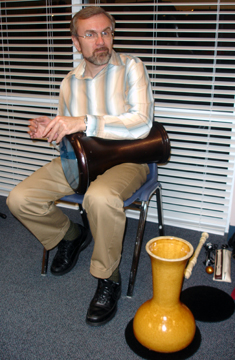 Dinah. The Levite’s concubine. Tamar, the princess. They, and the other characters who populate their stories, are our mirror images.
Dinah. The Levite’s concubine. Tamar, the princess. They, and the other characters who populate their stories, are our mirror images.
Every one of them became pawns. Two of them were, without any question, the victims of violent sexual assault. Each figured in narratives focused on men securing male privilege and male power.
There are some who may argue that Dinah, whose story is told in Genesis 34, may have consented to a liaison with Shechem, the prince of the nearby city. But no one can argue with Jacob’s silent acquiescence in the machinations of his sons, who insist that Shechem can only marry Dinah if he and the men of his city are circumcised. Jacob’s sons wait until the townsmen are weak and in pain, march through the city and kill every last one of them. Their women, children, and property become Israel’s chattel.
In Judges 19, we read about the Levite’s concubine, who runs away from her husband is eventually reattached to his household. We don’t know how she feels. She does not utter a word in the story and her fate is decided by her husband and father. Her death, too, is her husband’s decision; when an angry mob rushes the home where he is staying he hands her to them to save himself and his host. The next morning, after she has been gang raped, the Levite finds her lying at the door, her fingers on the threshold. Later, he dismembers her body and calls the Israelites to war. Nearly the entire Benjamite tribe is destroyed and another 600 women will be abducted.
King David’s daughter, Tamar will desperately try to convince her half-brother Amnon not to rape her (2 Sam. 13). She will fail. When the searing account of the assault ends and Tamar tries to save her future by convincing him not to cast her out, Amnon will tell his servant to send “this” out of his room.
This past week, my students and I worked through these stories. We discussed common elements: In each, the narrative either gives the woman involved no voice at all, or she is told to remain silent by men when she speaks.
My students offered observations: Dinah’s brothers gain a city’s worth of women, children, livestock and goods. The Levite, who threw his concubine to a raging and murderous mob, lies about his own part in the horror and will never have to answer for his crimes. The war he starts will make his own crimes negligible, forgotten by his fellow Israelites. Tamar’s full-brother Absalom will eventually, after two years, arrange for Amnon’s death, but Absalom’s revenge could be a cover for his ambition: Amnon was, before he died, the first-born son, and heir to David’s throne.
They noticed this, too: In no way do these stories valorize the exercise of male authority and prerogative in these stories. Dinah’s brothers act cruelly. The Levite’s Concubine fills us with horror; the war he unleashes proves what happens when a society has gone amok. The men who circle around Tamar – not Amnon, nor Absalom, nor her father David – all enact and accept her ruin.
These are lessons about what happens when male power is exercised to hide male weakness. These are stories that show us the consequences when women are abused. They are, in every regard, pertinent to our times – obviously, women in this world are not safe from any of the kinds of assaults these biblical narratives describe. 
But there’s this, too: Just as in biblical stories, today’s privileged continue to marginalize and silence those whose very bodies they make into vehicles for their exercise of power.
In North Carolina, our state legislature, one dominated by a privileged white majority, has just made it so much more likely that transgender individuals will be subject to abuse and attack. LGBT individuals have been stripped of legal protections. House Bill 2, the Public Facilities Privacy & Security Act is an act of violence that has been based on a comprehensive effort to silence transgender persons and criminalize them.
Those who supported the bill have been tarring transgender women as potential rapists. Facts don’t matter (they mostly don’t this election year). There is not a single case in the nation to substantiate all the talk about the dangers women and girls face if we don’t control where transgender women use a toilet. Nevertheless, the smearing, searing calumny is voiced.
What does bible tell us? Privileged individuals in our country frequently claim bible as their inspiration. But our texts condemn the manipulation and misuse of the weak in service of the powerful and strong. We do not walk away from Dinah, the Levite’s concubine, or Tamar believing that those heartbreaking narratives are meant to tell us how life should be lived, but how life should not be lived.
Torah holds a mirror to each generation. To look is to know: We must change.














